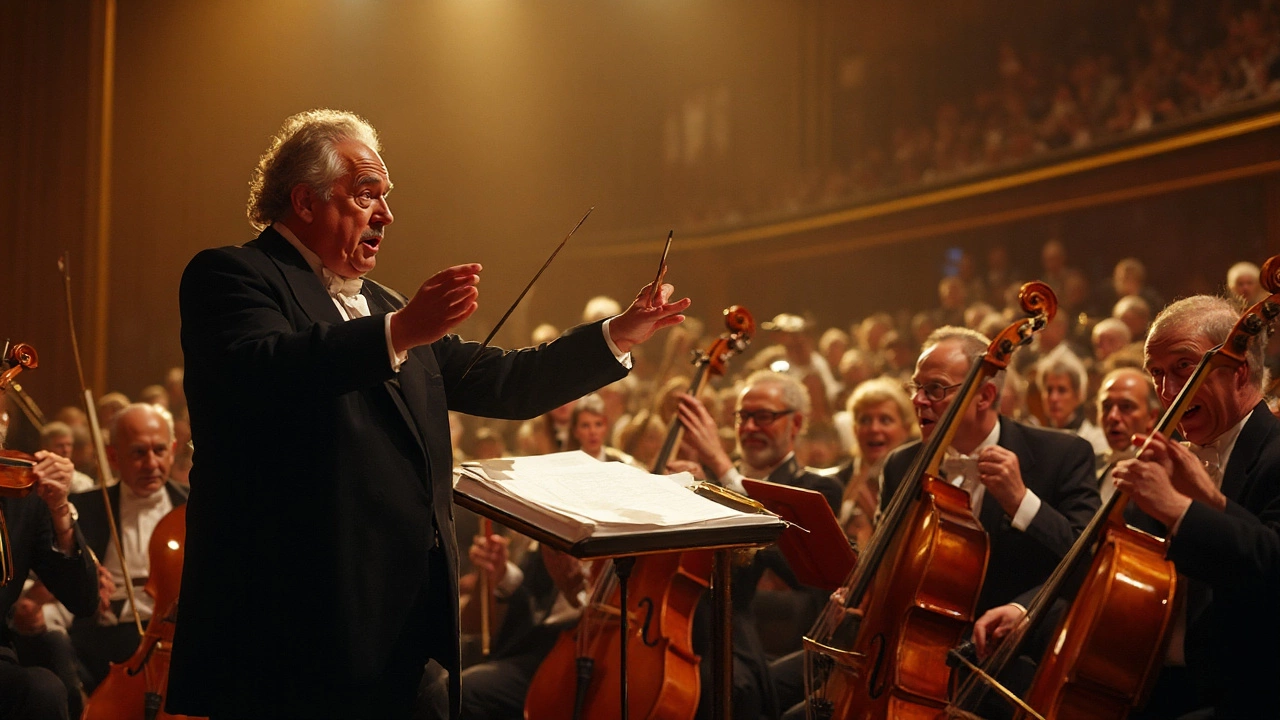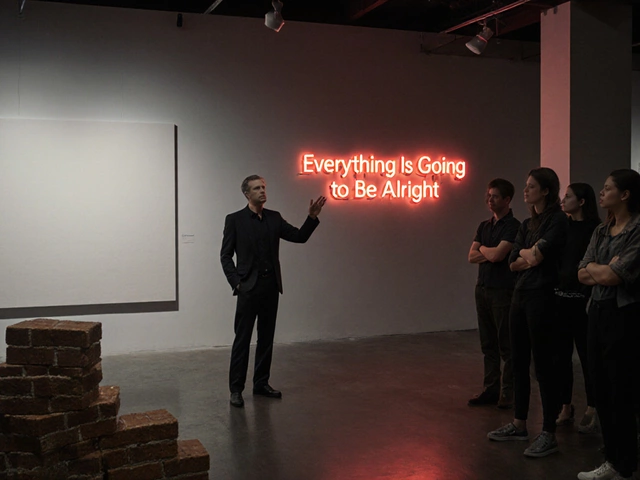Have you ever watched an orchestra suddenly erupt in sound so powerful you could feel it in your chest? Or blasted your favorite song and realized there’s more to loudness than just the volume knob? Most folks assume "loud" just means “turn it up,” but in music, it gets its own secret code and culture. The simple word for loud is rarely what people expect. There's more history, technique, and even a little theater behind it—what musicians see on a sheet of music means more than just “play it loud.”
What Does 'Loud' Mean in Musical Terms?
If you look at a sheet of music, you won't find the word "loud" spelled out. Instead, you’ll spot special Italian words or symbols. The most basic word is forte—yep, just like 90s keyboards or that coffee shop on the corner. It looks like a fancy "f" in print. Musicians learn to watch for 'f' (forte), 'ff' (fortissimo for "very loud"), or even 'fff' (which is, no kidding, "as loud as you can manage"). These words aren’t just decoration—they’re the guideposts for a wild ride in volume.
Where did forte come from? Back in the 17th and 18th centuries, Italian was the language of musical notation. That’s why composers like Beethoven or Mozart used these terms no matter where they lived. Forte literally means “strong” in Italian. Every other dynamic marking—piano for soft, mezzo for medium—also comes from Italian. When someone shouts "play it forte!" in rehearsal, it means to fill the space, give it all you’ve got, but still with control. Not just noise.
But forte is only one part of a bigger family of dynamic words. See a 'p' (piano)? Play softly. ‘mf’ (mezzo forte) means somewhere in the middle. Sheet music is like a recipe: too much “f” and you overpower everything. Too little and nobody hears you. Forte isn’t a free pass to scream; it’s asking for tone, color, and energy at a higher, richer level.
There’s a myth that classical music always stays quiet. Nope. Take Mahler’s symphonies—he could go from a whisper to a roar in seconds. In modern pop or jazz charts, you’ll often see the same dynamic labels, though sometimes songwriters just write “louder” or “big.” The traditions are still there even behind your favorite rock ballad.
Spotting Loud On a Page: Symbols, Marks, and How They Work
Open a piece of sheet music and you'll see a world of coded messages. For loud, 'f' (forte) and its friends jump out most. But there’s more going on. Dynamics can change bar-to-bar: crescendos (hairpin-shaped marks < and >) mean build up the sound—make it louder (crescendo) or softer (decrescendo/diminuendo). Musicians practice these as carefully as notes themselves.
Fortissimo, written as 'ff', asks for serious presence—think of a brass fanfare or a rock band’s huge chorus. On the flip side, pianissimo ('pp') is soft to the point of holding your breath. These symbols look tiny, but they carry the emotional punch of the music. It's not about just playing harder. If you hammer the keys or blow out your trumpet in a mad rush, that'll sound harsh, not rich. Instead, good musicians shape their "loud" to match the melody and mood, following the marks as closely as the notes themselves.
Clever composers will trick you, too. Sometimes a passage goes from pianissimo to fortissimo in seconds, making the audience jump—or feel a wave of energy. Ever listened to Queen’s "Bohemian Rhapsody"? There are sudden blasts of sound out of nowhere. Old-school composers loved these effects just as much.
To get a feel for just how subtle these marks can be, check out a comparison:
| Dynamic Mark | Meaning | How Loud? |
|---|---|---|
| pp (pianissimo) | Very soft | Whisper-quiet, barely audible in a hall |
| p (piano) | Soft | Quiet, gentle, background levels |
| mf (mezzo forte) | Medium loud | Like a speaking voice—not hiding, not shouting |
| f (forte) | Loud | Full presence, fills the room |
| ff (fortissimo) | Very loud | Powerful, dramatic, attention-grabbing |
| fff (fortississimo) | Extremely loud | Pushing the limit, thunderous |
Notice there’s an art to it. You want to stand out without drowning everyone else—so musicians pay almost as much attention to dynamics as melody and rhythm. Practice with a metronome won’t help here. You have to listen and feel your way through, keeping your eyes peeled for every tiny marking.

Loudness in Practice: How Musicians Play 'Loud'
Here’s the fun part: playing “loud” is way more complex than just cranking up an amp or smashing the keys. Musicians practice for years to build control over loud passages. Say you’re a violinist and you see “forte.” It’s not just about bowing faster—it’s about weight, angle, speed, and even where on the string you press. For a singer, singing forte isn’t the same as shouting. If you belt out every note, you’ll blow your voice out by halftime. Instead, vocalists learn to support with breath, relax their throat, and project over a whole orchestra (believe me, I’ve seen my spouse Merriweather pull this off in a packed theater—no microphone needed).
Wind and brass players have a delicate balancing act: too hard and you’ll go sharp or lose tone. Drummers and percussionists get tempted to let loose, but great players know how to keep “big” without going sloppy. Even on guitar or piano, “loud” comes from a mix of finger pressure, pedal work, and arm movement. The trick is to sound rich and clear, not just noisy. Every group—rock band, jazz trio, symphony—develops their own idea of what “forte” should mean in context.
Live, these choices really stand out. At a concert, watch a band’s body language as they shift from quiet verses to explosive choruses. There’s almost a choreography to it. Some musicians cue each other with eye contact or a swing of the arm. In orchestra pits, whole sections rise and fall in volume together. Nobody wants to stick out awkwardly: "forte" is a team effort.
Recording studios tweak loudness levels for contrast. Producers often use “track riding” to punch up the chorus or back off during the verse. But even with all that tech, the human touch makes the difference. Raw, honest energy can’t be faked.
- Tip: When practicing at home, record yourself. Listen back for places where “loud” just becomes “harsh”—work on evening out your tone at high volumes.
- Try listening to a piece of music you know well, and make a note where you hear sudden volume changes. See if these match up with marked "forte" or "fortissimo" passages in the sheet music.
- Don’t skip warm-ups. Musicians who rush into the biggest, loudest moments without prepping risk injury—especially singers and wind players.
Why Loudness Isn't Just Volume: The Emotional Side of Forte
So, if "loud" in music isn't just about decibels, why do composers and songwriters sweat over exactly how much “forte” is the right forte? The answer’s tied to emotion and story. Music builds drama not only through melody, but with sudden swells or drops in volume. Imagine the last time you felt goosebumps from a movie soundtrack—the music probably went from whisper to thunder right in sync with the action.
Great performers lace their loud passages with feeling, pushing not just sound waves but emotions across the room. Even a quiet, acoustic set gets more gripping when the artist kicks in with a powerhouse chorus or big finish. Dynamics make tunes memorable; many fans can list favorite "epic" or "explosive" moments from live shows, whether it’s a soaring guitar solo or the classic "wall of sound" effect in a Springsteen anthem.
Studies have shown that audiences react most strongly to dynamic change—meaning the difference between the softest and loudest parts. Researchers at the University of Sheffield ran tests with concertgoers and found the highest engagement and most intense emotional reactions came right after big jumps in forte. It’s the contrast, not just the absolute volume, that matters.
Composers use this magic all the time. Look at Beethoven’s "Symphony No. 5": he starts with a bold, loud four-note theme—instantly setting the room on edge. In musicals, the biggest hit numbers always pack a punch, driving home key emotions. Even pop producers play with this: Adele’s sudden switch to belting in “Someone Like You” hits so hard because the verses are gentle and close.
But here’s the kicker—good musicians know when to pull back, too. The real trick isn’t just playing at 100% all the time, but saving those loudest moments for when they’ll be most effective. It's about pacing, space, and storytelling. Whether you’re a pro on the stage or just jamming in your bedroom, finding your own sense of "forte" will always make your music more powerful.




